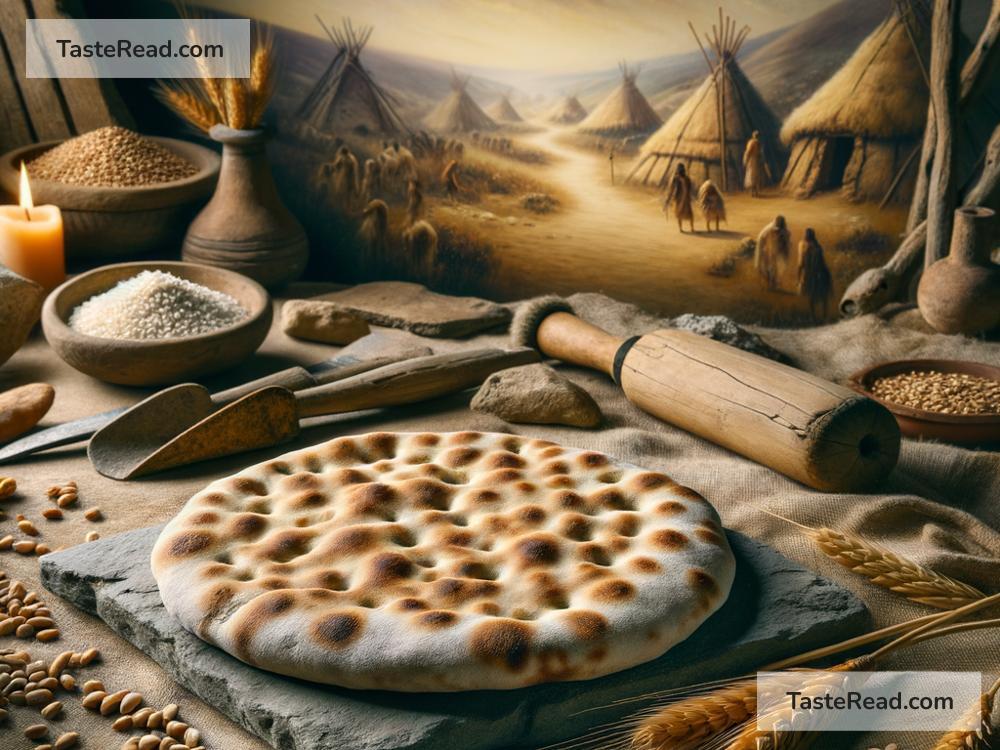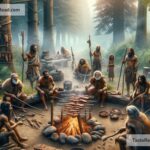The Origins of the First Bread: How It All Began
Every day, millions of people around the world enjoy bread in its many forms—sliced toast, fluffy rolls, flat tortillas, or crusty baguettes. Bread is one of the oldest and most loved foods on Earth. But have you ever wondered who made the first bread and how this amazing invention came about?
The story of bread goes back thousands of years, long before modern ovens, mixers, or bakeries ever existed. It all began with simple grains, some water, and a little human curiosity.
A Humble Beginning: The Power of Grains
The first bread wouldn’t have existed without grains. Grains like wheat, barley, and rye grow naturally in the wild, and they were some of the earliest plants humans learned to gather. Around 10,000 years ago, during the Neolithic period, humans started farming. In regions like Mesopotamia (in modern-day Iraq), Egypt, and parts of Asia, people began cultivating grains. This marked the beginning of an agricultural revolution that changed human life forever.
Grains could be ground into flour using stones, although early flour was coarse and rough—not like the fine flour we use now. These ancient farmers realized that mixing ground grains with water created a dough. At first, the dough was likely cooked over an open fire or on a heated flat rock, creating something like a dry, dense flatbread. This was probably the first type of bread ever made!
Accidental Discoveries: The Birth of Leavened Bread
Flatbread was a good start, but something amazing happened when people discovered leavening. Historians believe leavening might have been discovered by accident. Imagine this: someone might have left a piece of dough sitting out for a while. Wild yeast from the air mixed with the dough, causing it to ferment. When the dough was cooked, it puffed up and became lighter and softer. This was the first-ever leavened bread!
It’s hard to pinpoint exactly when this happened, but evidence shows it might have been as early as 4,000 BCE in Egypt. The Egyptians were masters of bread-making and even had bakeries. They discovered how to use yeast to make their bread rise, leaving it fluffy and more enjoyable to eat. They also baked their bread in clay ovens, which helped improve its texture and flavor.
Interestingly, bread became central to Egyptian culture. It was used as food for the living, offerings to the gods, and even provisions for the afterlife. Bakers were highly respected, and bread recipes were passed down through generations.
Bread Travels the World
From Egypt, bread technology spread across the ancient world. The Greeks learned how to bake bread from the Egyptians, and they took it to the next level by inventing new recipes. For example, they added ingredients like honey, milk, and oil to create sweeter or richer breads.
The Romans later adopted bread-making practices from the Greeks. They built large public bakeries and made bread a staple food for soldiers and citizens alike. Roman bread was so important that free grain was distributed to poorer citizens so they could bake their own loaves.
In other parts of the world, people developed their own bread traditions using local ingredients. In India, flatbreads like chapati and naan became popular. In China, steamed buns became a staple. Native Americans in North America made bread from corn, creating recipes like cornbread and tortillas.
Despite the differences in ingredients and cooking methods, bread evolved into a universal food that could be enjoyed in countless ways.
Modern Bread: A Scientific Revolution
Bread-making didn’t stop evolving after ancient times. In the Middle Ages, bakers began using wooden paddles to slide bread into ovens, and millers ground flour more finely to improve its texture. By the 19th century, science stepped in to help. People learned more about yeast and how to use it consistently in baking.
The invention of mechanical mixers, steam-powered ovens, and factory production revolutionized bread-making. By the 20th century, sliced bread became a phenomenon, thanks to Otto Frederick Rohwedder, who created the first bread-slicing machine in 1928. This invention was so revolutionary that people called it “the best thing since sliced bread.”
A Timeless Food
Although bread-making has advanced significantly over the years, its essence remains the same: a mix of grain, water, and heat. Today, bread comes in all shapes, sizes, and flavors, from artisanal sourdough loaves to simple supermarket slices.
As we enjoy bread today, it’s fascinating to think about its origins. That humble flatbread cooked on a rock thousands of years ago paved the way for endless possibilities. Whether we’re savoring a sandwich, dipping bread into soup, or spreading butter on toast, we’re connecting to a rich history of human creativity and innovation.
So, the next time you take a bite of bread, remember that you’re eating something with a story as old as civilization itself. Bread may be simple, but its journey through time makes it truly extraordinary.


